School funding: Winners and losers in shake-up
- Published

Some schools will see their budgets increase by hundreds of thousands of pounds
Individual schools will lose or gain hundreds of thousands of pounds in the first year of the biggest shake-up of school funding in England for decades.
Official figures released as the part of consultation on the changes show 9,045 schools will lose money while 10,653 will get more.
One school - Nottingham Academy - will get £224,000 less in the first year of the new "funding formula".
Two, Loxford School in Redbridge and The Sydney Russell School in Dagenham, will be £300,000 better off amid moves to end a "postcode lottery".
Governors urge school funding bravery
In four areas of the country every school will either be the same or worse off, with no additional funding, according to the data, external.
The figures look only at the new funding formula and do not take account of other costs and pressures on school budgets, such as inflation.
Schools have to account for unfunded rises in pay, pension and National Insurance contributions, which will take up between 6% and 11% of their budgets by 2019-20.
It has been estimated that real term losses will reach £74,000 for primary schools and £291,000 for secondary schools by 2019-20.
Across England, the overall budget given to schools is rising by 0.5% compared with spending in 2016-17, from £31.6bn to £31.8bn.
What is changing and why?
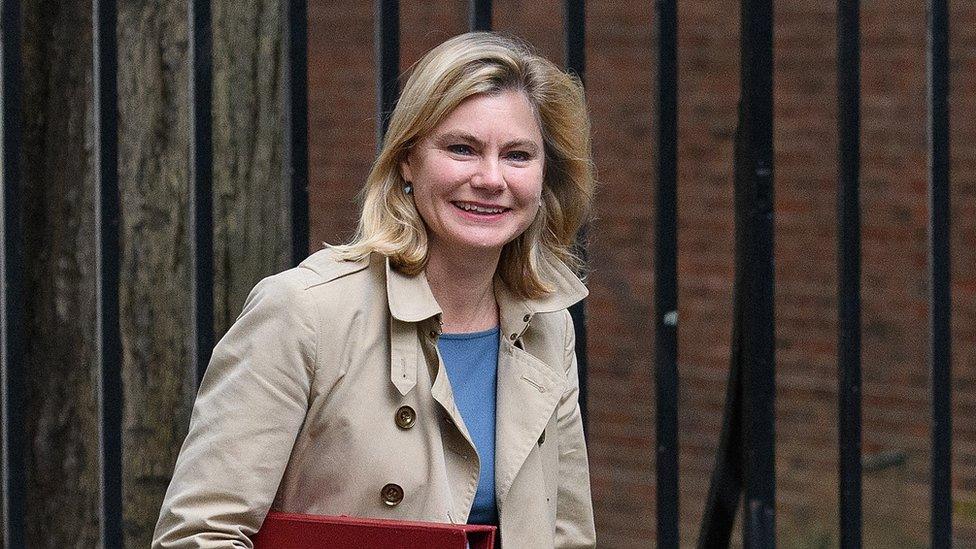
Justine Greening is proposing a new formula
The Department for Education (DfE) is trying to end what it refers to as an "historic postcode lottery in funding".
Education secretary Justine Greening says the old system is "unfair" as similar schools can get different levels of funding with "little or no justification".
The current system sees councils distribute the dedicated schools grant based on the number of schools, the level of need and early years provision.
It will be distributed according to a nationally-set formula, rather than local ones, mainly on pupil numbers and need. And the new model will recognise that some smaller schools in rural areas face extra costs because they are smaller.
Some schools stand to lose up to 1.5% of their existing funding in the first year, worth potentially hundreds of thousands of pounds to some, while others will be better off.
Which areas will be hit hardest?
It means less money for urban areas including inner London, Birmingham, Manchester, Nottingham and Coventry.
Head teachers representing about 3,000 schools say the new national funding formula ignores inflationary cost pressures faced by all schools.
It means every state-funded school in Southend-on-Sea, Hammersmith and Fulham, Lambeth and Camden will either have less or the same funding as now.
In Birmingham, the largest education authority, 15 out of 386 schools, 4% of the total, will see funding increase.
Which schools will lose the most?
The largest cut to an individual school's budget under the proposals is 1.5%.
This will affect 596 schools. And 123 schools will receive at least £100,000 less in the first year.
Nottingham Academy will lose £224,000 of the £15.1m it received in 2016-17. Langdon Academy in Newham will be £183,000 worse off. Both are "all-through" schools catering for pupils aged three to 19.
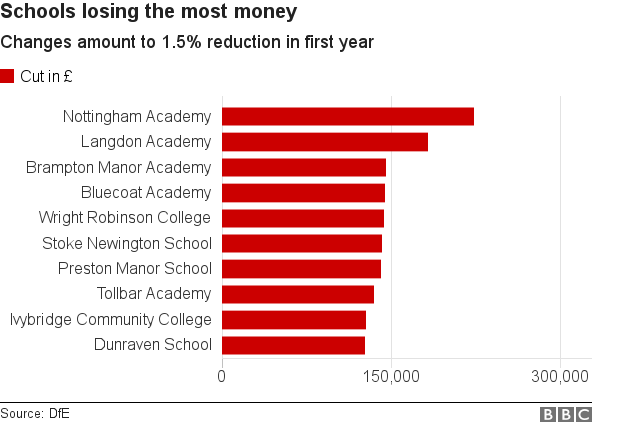
In Nottingham, 87 out of 89 schools will see either see a cut or no increase in their funding.
Councillor Sam Webster, who oversees education for Nottingham City Council, said: "These budget cuts will mean cuts to important aspects of school life. Faced with reducing funds, schools in Nottingham will have to reduce services.
"And it's the added enrichment - the out of normal hours services, the holiday clubs, the breakfast clubs, the trips to broaden the horizons of our children, the reading sessions for parents, the extra-curricular sports, culture and arts activities - that I fear will be first to go."
Which areas will see the biggest cuts?
Urban, inner-city areas will see the biggest falls. London boroughs, as well as Manchester, will each lose 1.4% of funding, spread across their schools.
In Hackney, schools will lose £2.7m in the first year of the new funding model. However, seven of the 73 schools in the London borough will see funding increase.
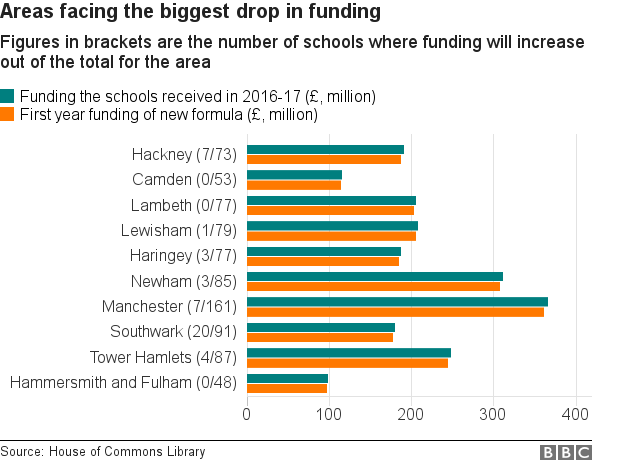
Which schools will gain the most?
For the schools seeing the biggest lift in their funding, the change represents a boost of about 3%, with the Loxford School in Redbridge, Outer London, receiving an additional £330,000 in the first year.
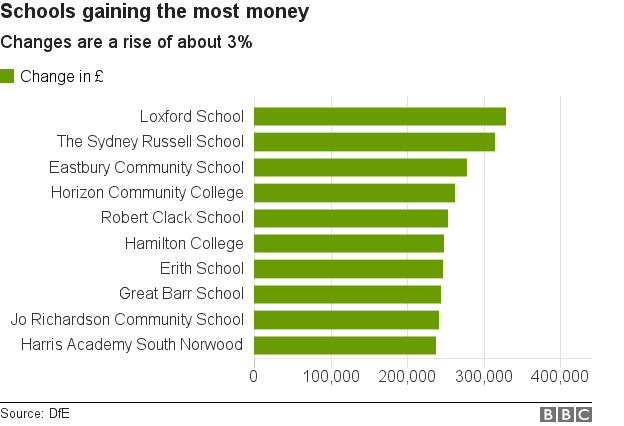
Which areas will benefit?
Areas such as Derby, York and Torbay, however, can expect to see the total funding shared by schools to rise by about 2.4%.
Across England as a whole, rural areas will see an increase in funding because of a new "sparsity" measure that takes account of their schools being smaller and further away for pupils to travel to.

The consultation , externalon the changes closes on Thursday.
The DfE said the proposals would ensure "every pound of the investment we make in education has the greatest impact".
- Published18 October 2016

- Published14 December 2016

- Published21 March 2017
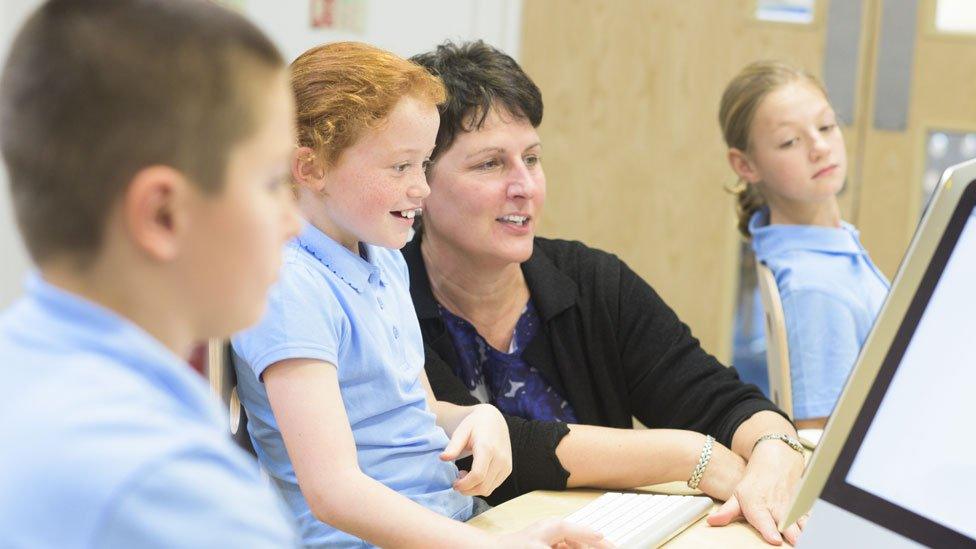
- Published14 December 2016